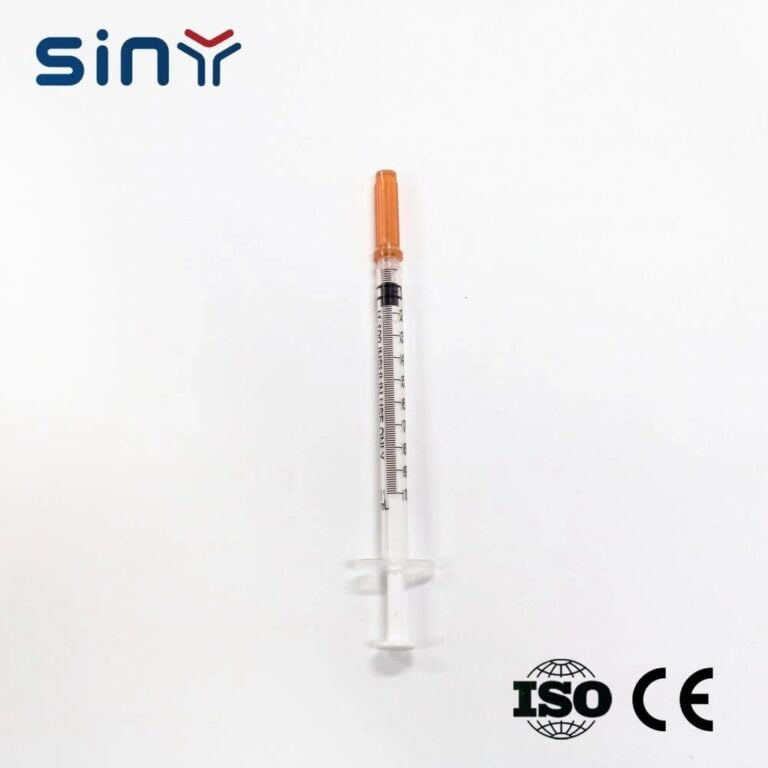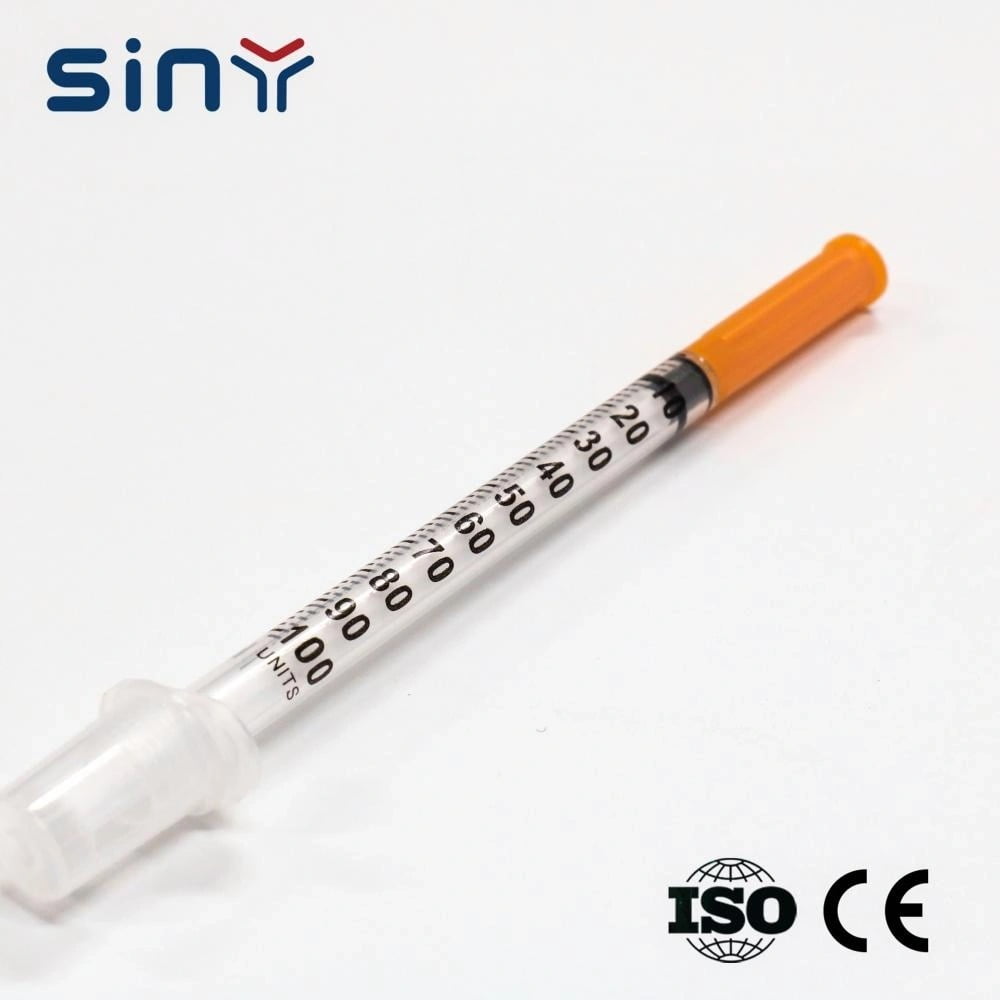An insulin syringe is a medical device for administering insulin, a hormone used to manage diabetes. These syringes are designed explicitly for insulin injections, which typically require smaller volumes of liquid than other injections.
Insulin syringes are characterized by their fine needles and calibrated scale for measuring insulin dosage accurately. They typically have a capacity of 1 mL or less, with excellent gauge needles (usually between 28 and 31 gauge) to minimize pain and tissue trauma during injection. The markings on the syringe barrel are designed to allow for precise measurement of insulin doses, which are often measured in units rather than milliliters.
Table of Contents
A syringe is a medical device used for injecting fluids into or withdrawing fluids from the body. It consists of a hollow cylinder (barrel) with a plunger that fits tightly inside. The barrel typically has graduated markings to indicate the fluid volume being drawn into or expelled from the syringe.

Syringes come in various sizes and types, each designed for specific medical purposes. They can vary in capacity, with more giant syringes used for administering medications or withdrawing bodily fluids, while smaller syringes, such as insulin syringes, are used for more precise measurements.
Diabetes is a chronic condition that affects millions of people worldwide. It requires careful management and monitoring to maintain healthy blood sugar levels. One of the most significant advancements in diabetes treatment is the development of insulin injectors. These devices have revolutionized how insulin is administered, making it easier and more convenient for individuals with diabetes to manage their condition effectively. This article will explore the benefits, features, and importance of insulin injectors in diabetes management.
Insulin is a hormone produced by the pancreas that regulates blood sugar levels. In individuals with diabetes, the body either does not produce enough insulin (Type 1 diabetes) or cannot effectively use the insulin it makes (Type 2 diabetes). Insulin therapy is crucial for managing diabetes and preventing complications.
Before the advent of insulin injectors, insulin was typically administered using vials and syringes. This method required manually drawing the correct dosage from the vial and injecting it into the body. It was time-consuming and often cumbersome, especially for individuals with limited dexterity or visual impairments.
Insulin injectors have transformed diabetes management by offering several advantages over traditional methods:
a. Convenience: Insulin injectors are compact and portable, allowing individuals to carry them wherever they go. This convenience lets users administer insulin discreetly and easily, even in public settings.
b. Accurate Dosage: Insulin injectors are designed to deliver precise and consistent insulin doses. This eliminates manual measurement, reduces the risk of dosage errors, and ensures optimal blood sugar control.
c. User-Friendly: Insulin injectors are designed with user-friendliness in mind. They often feature clear dosage indicators, ergonomic grips, and simple mechanisms for injection. This makes them suitable for individuals of all ages and abilities.
d. Reduced Pain and Discomfort: Insulin injectors utilize fine needles and advanced injection technologies, resulting in minimal pain and discomfort during administration. This is particularly beneficial for individuals who require multiple daily injections.
e. Improved Compliance: Insulin injectors’ ease of use and convenience can improve treatment compliance. Individuals are more likely to adhere to their prescribed insulin regimen, leading to better diabetes management and a reduced risk of complications.

Various types of insulin injectors are available on the market, each with unique features and functionalities. Some common types include:
Pen injectors resemble writing pens and are pre-filled with insulin cartridges. They offer precise dosage control, ease of use, and discreet administration.
Jet injectors use high-pressure air to deliver insulin through the skin without needles. They are suitable for individuals who have needle phobia or difficulty with manual injections.
Patch injectors are wearable devices that deliver insulin through microneedles. They provide continuous insulin delivery and eliminate the need for frequent injections.
Insulin injectors have revolutionized diabetes management by simplifying the process of insulin administration. Their convenience, accuracy, and user-friendly features make them invaluable tools for individuals with diabetes. By ensuring precise dosage delivery, reducing pain, and improving compliance, insulin injectors contribute to better blood sugar control and overall health. As technology advances, we can expect further innovations in insulin injectors, further enhancing the lives of individuals with diabetes.
Insulin is typically administered using insulin syringes designed explicitly for insulin injections. These syringes have fine needles and are calibrated to measure insulin doses accurately.
Insulin syringes usually have a capacity of 1 mL or less. This smaller volume is suitable for precisely measuring and administering insulin doses.
Siny offers disposable insulin syringes in various sizes to accommodate different insulin dosing needs. Standard sizes include 0.3 mL, 0.5 mL, and 1 mL insulin syringes.
One cc (cubic centimeter) equals 1 mL in a syringe. In Siny medical terminology, “cc” and “mL” are often used interchangeably to denote volume measurements in syringes.